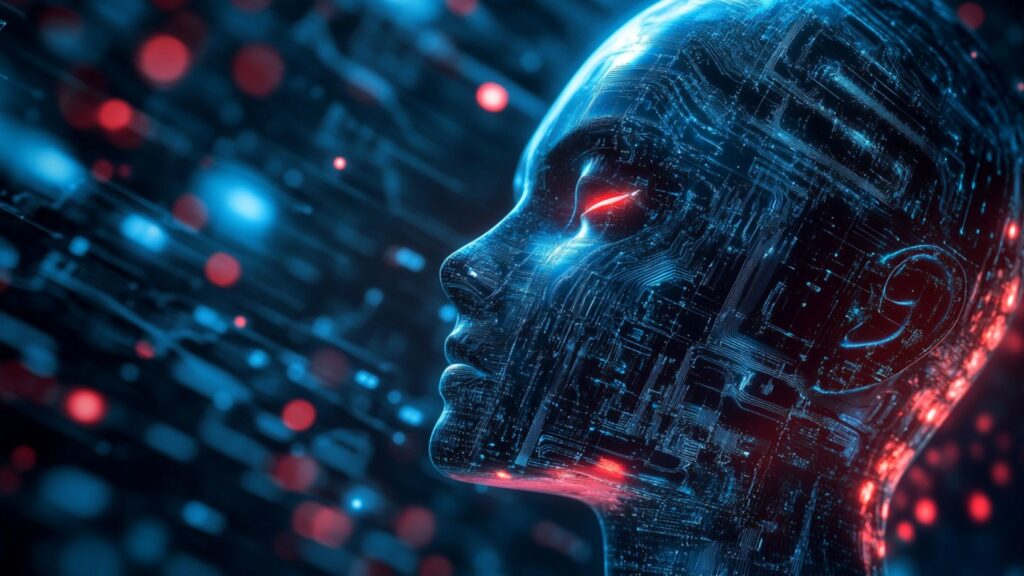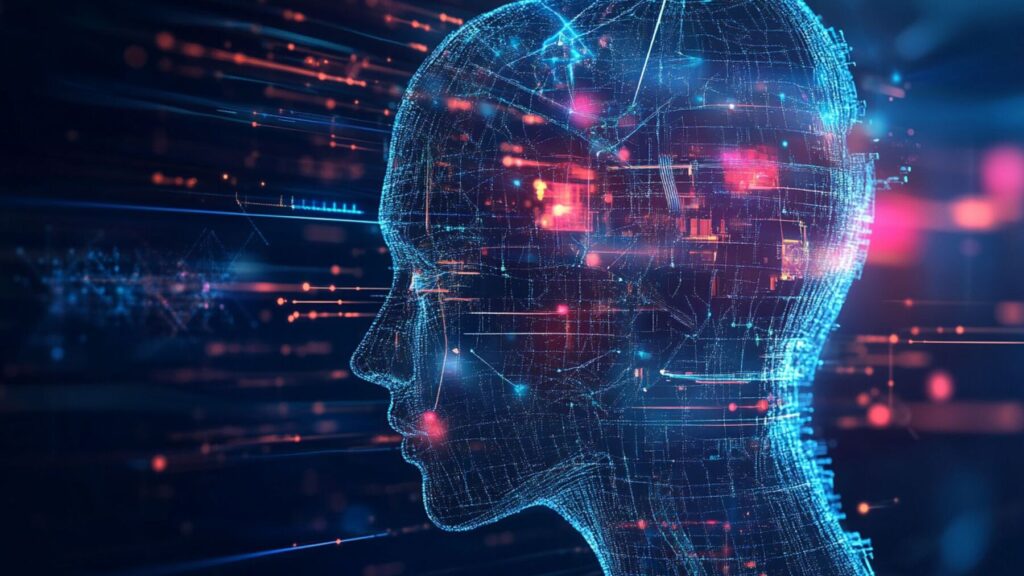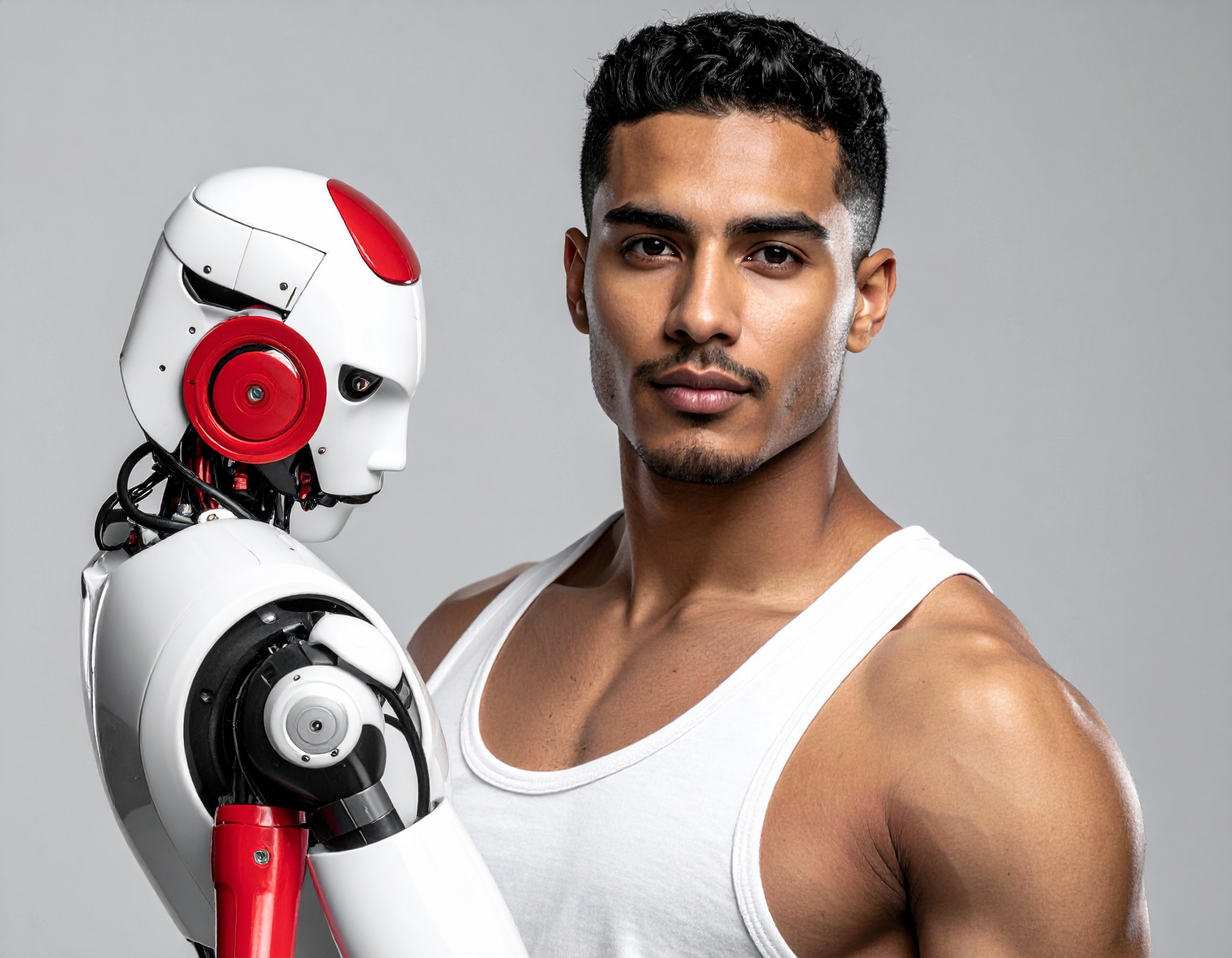How to Verify That Text Is Written by AI: The Best AI Detectors of 2025

Artificial intelligence now writes at a scale that was previously unthinkable. Millions of words are generated daily through chatbots, writing assistants, and automated content tools. Articles, essays, and product reviews are often written entirely by large language models, making AI text detection essential for anyone who values truth and authorship online. For such purposes, the most reliable AI checker is needed.
The expansion of AI-generated content has reshaped education, media, and marketing. In schools, it affects grading and academic honesty. In journalism, it challenges editors who must confirm factual accuracy. In marketing, it changes how brands create web copy and blogs. Identifying automated writing helps maintain credibility and fairness.
Reliable AI content detection tools enable users to determine whether an algorithm or a person generated the text. These tools are becoming standard across education, publishing, and corporate environments, detecting subtle differences in rhythm, structure, and vocabulary that reveal AI generation.
AI text verification ensures the originality and integrity of text. This article explores how AI detectors work, reviews the best AI detectors of 2025, and explains how to use them effectively. You'll learn about methods, tools, and best practices that will help you determine which AI checker is best in 2025.
Understanding AI-Generated Text and Its Characteristics
Modern AI models, such as GPT, Claude, Gemini, and LLaMA, build sentences using probability predictions. They don't understand language the way humans do — instead, they generate text based on statistical likelihoods. The result sounds fluent and logical but contains patterns that reveal its automated origin.
Common AI content patterns include repetitive rhythm and polished consistency. The most accurate AI models avoid emotional fluctuations and maintain stable sentence lengths. Humans write with irregular tone — short sentences followed by long ones — and frequent mood changes.
AI also repeats certain connectors and expressions. Phrases like "in addition," "moreover," or "as a result" appear too frequently. This mechanical uniformity gives AI writing its distinct quality.
Key AI writing characteristics include:
- Uniform tone: Minimal emotional variety or personal touch
- Predictable transitions: Overuse of structured linking words
- Even pacing: Similar sentence length and punctuation frequency
- Flawless grammar: Few mistakes, but less spontaneity
- Impersonal voice: Lack of personal insight or lived experience
Detecting these markers becomes harder each year. New models imitate humor, style, and local idioms, even replicating human errors to appear more natural. As a result, detecting GPT-generated content requires advanced analytics, hybrid scoring, and continuous updates.
How AI Detectors Work: Methods and Algorithms
AI detection tools analyze writing mathematically and linguistically, identifying statistical patterns, probability structures, and hidden traces left by machine-generated language. The most effective systems combine multiple methods.
Perplexity scoring measures how predictable text is to a language model. Lower perplexity indicates a smoother, more mechanical structure — often a sign of AI-generated content. Human writing tends to be "spiky," full of unpredictable choices.
Watermarking is another approach. Some AI systems embed hidden signals or token sequences inside generated text. These invisible marks can later be detected to confirm authorship.
Statistical analysis evaluates sentence length, punctuation rhythm, and word frequency. Humans introduce irregularities, while machines maintain uniformity.
Machine learning classifiers represent the most advanced approach to classification. These detectors are trained on large datasets of both human and AI-generated writing, learning patterns automatically and improving over time through retraining.
Each method has limitations. Statistical tools can misjudge highly formal human writing. Classifiers may need constant updates. Watermarking requires cooperation from AI model developers. But how can you determine which AI detectors are best?
Modern detectors often combine several systems, and this hybrid approach delivers stronger analysis and more accurate verification than any single method alone.
Main methods used by AI detectors include:
- Perplexity-based analysis: Measures predictability and variation
- Statistical measurement: Analyzes sentence structure, punctuation, and word diversity
- Machine learning classification: Uses neural networks trained on mixed datasets
- Watermark reading: Detects hidden identifiers placed by AI systems
- Hybrid multi-layer detection: Integrates all techniques for maximum accuracy
Statistical and Linguistic Analysis in AI Detection
Statistical and linguistic detection remains foundational for modern systems. It focuses on measurable text characteristics, such as word length, sentence diversity, and vocabulary entropy.
Humans produce irregular phrasing, while AI maintains clean, predictable patterns. This distinction helps systems like GPTZero and Copyleaks spot generated content. So, what’s the best AI detector: statistical or linguistic?
Statistical AI detectors calculate "burstiness" — the variation in sentence length and structure. Humans display high burstiness, while AI does not. Entropy measures vocabulary diversity — again, human writers typically score higher.
Linguistic analysis reveals that AI struggles to replicate emotional or stylistic spontaneity. Detectors use this difference to estimate authorship probability. Many tools visualize results in charts and color-coded sections, helping educators and editors quickly identify problem areas.
While not flawless, linguistic analysis remains a crucial component in the sophisticated detection methods modern software employs.
Machine Learning and AI Classifiers for Detection
AI classifier models are now central to large-scale detection. These systems utilize deep learning to distinguish between human and AI-generated text. Developers train them on thousands of labeled examples from known sources.
During training, the model studies subtle clues in both writing styles, recognizing the logic, syntax, and phrasing patterns unique to each. Once trained, it assigns probability scores to new text segments.
This approach powers advanced AI content detection tools like Originality.ai and Writer.com. They perform large-scale scans, analyzing thousands of pages per minute, and are used in publishing, education, and SEO auditing.
False positives still occur, especially in structured or academic writing, although regular model updates help reduce such errors. Continuous learning enables detectors to adapt to new AI models more quickly than older systems.
These improvements make machine learning the backbone of distinguishing AI-generated text from human-written text and explain its growing adoption across various industries.
Top AI Detection Tools of 2025

In 2025, several platforms lead the AI detection tools market, with their accuracy, interface, and scalability making them essential for anyone checking text authenticity.
1. OpenAI AI Text Classifier
The OpenAI AI Text Classifier is built by the same team behind GPT models. It's designed to recognize patterns and statistical traces left by its own systems. The latest version combines linguistic cues with watermark recognition when available.
This tool integrates seamlessly into research environments and newsroom workflows. It provides probability-based scores rather than simple yes/no results, helping editors make informed judgments. Users appreciate its transparency — it doesn't simply label content as "AI" or "human" but explains its confidence level in each assessment.
Its main advantage is strong compatibility with GPT-based content, making it one of the best AI detection tools for identifying outputs from OpenAI models. However, it performs less accurately with unrelated models, such as Claude or Gemini.
2. GPTZero
GPTZero remains a top choice for education. It was one of the earliest tools built specifically for teachers, calculating perplexity and burstiness with sentence-level scores.
The platform's user-friendly dashboard color-codes potentially AI-generated sections, helping educators quickly pinpoint problem areas. It also provides batch checking, supporting academic institutions managing many student submissions.
GPTZero is often praised for its clarity and reliability with essays, research papers, and online assignments. It's free for light use, with premium plans for institutions. Its widespread adoption in education makes it one of the best p AI checkers available.
3. Originality.ai
Originality.ai is widely regarded as the best AI detection tool for professional and commercial use. It combines AI detection with plagiarism scanning, making it valuable for publishers and content marketers.
Its algorithms detect writing from multiple AI models, including GPT, Claude, and Gemini. Reports include percentage-based confidence scores and highlighted sentences. The platform's browser extension allows on-the-fly checks during content creation.
It also offers team management features, making it an ideal solution for agencies that handle multiple writers. Many organizations rely on it to maintain SEO quality and prevent unintentional duplication generated by AI. With accuracy rates approaching 95%, it’s often considered what is the most accurate AI detector available in 2025.
4. Writer.com AI Detector
The Writer.com AI detector is built into a broader suite of enterprise writing tools. It supports over 20 languages and works directly within CMS and productivity apps, such as WordPress and Notion.
Unlike some free tools, it provides in-depth analytics and integrates with brand style guides. It's especially useful for companies managing multilingual teams. The platform highlights where AI may have influenced tone, enabling editors to adjust content for consistency.
Writer.com is widely regarded as the most reliable AI checker for corporate environments, helping maintain compliance, tone, and accuracy across global communication workflows.
Together, these platforms — OpenAI, GPTZero, Originality.ai, and Writer.com — define the best AI content detection tools of 2025. Their collective advancement reflects the sophistication of modern detection tools.
Features and Accuracy of the Best AI Detection Tools
The effectiveness of the best AI content detector depends on their precision, scalability, and ease of use. OpenAI's classifier achieves about 80% accuracy for GPT-based content. GPTZero excels at structured academic writing, with accuracy above 90%.
Originality.ai outperforms most competitors in both accuracy and feature depth. It detects multiple AI models, integrates plagiarism checking, and generates detailed analytics dashboards. This combination makes it a top choice for marketing and SEO agencies.
Writer.com stands out for enterprise-level functionality. It supports multiple languages, integrates APIs, and includes analytics on writing quality — valuable for companies producing multilingual documentation or marketing materials.
When comparing these systems, consider these factors:
- Detection precision: High accuracy minimizes false positives
- Integration: Seamless workflow connection to CMS or LMS tools
- Supported languages: More language support means wider usability
- Batch processing: Ability to check multiple documents at once
- User reporting: Clear, visual dashboards aid interpretation
- Data privacy: Secure storage and deletion policies for uploaded text
Free versions allow individuals to test accuracy but offer limited features. Paid versions offer deeper scanning and automation. Many professionals combine detectors — using GPTZero for initial screening and Originality.ai for verification — to improve accuracy and reduce risk.
Choosing the Right AI Detector for Your Needs
Selecting the best AI checker depends on your environment and goals. For schools, GPTZero remains the top choice for everyday grading, while for content teams, Originality.ai offers speed, accuracy, and management tools. Writer.com is best suited for enterprise integrations, while OpenAI's classifier is ideal for research and editorial verification.
Consider these factors before deciding:
- Volume: How much text do you analyze monthly?
- Integration: Do you need API access or CMS support?
- Budget: Subscription models vary from free to enterprise pricing
- Accuracy demands: Is your use case high-stakes (academic honesty, journalism) or casual?
Organizations often adopt a layered strategy, using multiple tools simultaneously to ensure reliability and balance each tool's weaknesses. This hybrid approach represents best practices for professionals seeking the best AI checker.
Best Practices for Using AI Detection Tools

Even the best AI checkers aren't foolproof and should be used as part of a broader review process. AI detection tools are probabilistic rather than absolute, so interpretation must always consider context.
To use detection software effectively, apply these practices:
- Use multiple detectors. Each tool has unique strengths. Cross-verification increases confidence.
- Understand your audience. In academia, even partial use of AI may violate policies; in business, it might be acceptable.
- Look beyond the score. A 70% AI probability doesn't automatically mean the text is synthetic. Review structure, tone, and purpose.
- Keep software updated. Outdated detectors may miss signals from newer models, such as GPT-5 or Claude 3.
- Consider context. AI detection should align with the writing's purpose, since technical reports, for example, naturally sound formulaic.
- Avoid overreliance on automation. Human review remains the final authority.
You can also enhance accuracy by following these steps:
- Pre-screen content: Run drafts early in the editing stage to catch problems sooner
- Set internal policies: Define thresholds and consequences for detected AI use
- Educate teams: Train teachers, editors, or writers to interpret AI reports responsibly
- Document results: Keep verification records for transparency when disputes occur
For example, a university might combine GPTZero and Writer.com for final paper checks, while a marketing agency could integrate Originality.ai into its CMS to ensure SEO originality. Both cases demonstrate that accurate AI verification relies on methodical processes, not just software.
False positives can still occur, so it is essential to have a skilled human reviewer validate flagged content. Over time, combining human and machine insight yields the most reliable detection guidelines for schools, publishers, and businesses.
Future Trends in AI Text Detection
The question remains: what is the best AI checker in 2025? There's no definitive answer. The future of AI text detection is moving toward more intelligent, transparent, and adaptive systems.
1. Watermarking in AI text
Developers are testing cryptographic watermarks that leave invisible traces in AI-generated outputs, which can later confirm whether the text originated from a model. Once standardized, watermarking could become the universal solution for tracking authorship.
2. Real-time detection
Future browsers, text editors, and online forms will include built-in AI detection, providing instant alerts when passages appear machine-written. This will transform classroom and newsroom workflows.
3. Multilingual and multimodal detection
New detection trends in 2025 include analyzing data across multiple languages and media types. Detectors will check not only written text but also captions, subtitles, and transcripts.
4. Adaptive machine learning
Next-generation systems will learn autonomously from new AI-generated samples, updating more quickly than current models and narrowing the gap between the generator and detector. This will define the most accurate detection technology of the future.
5. Human-AI collaboration
The most effective systems will combine computational precision with editorial expertise, with AI acting as an assistant rather than an authority while humans provide final judgment.
AI content verification continues to evolve, with each generation of detectors becoming smarter and faster. Businesses, educators, and governments must remain vigilant for changes and regularly update their systems.
Ongoing training, awareness, and adherence to ethical standards will shape the evolution of AI content verification in the years to come. AI literacy will become a key skill for all professionals who write, edit, or evaluate content.
In summary, AI-generated writing has become an integral part of everyday communication, influencing how truth and authorship are perceived across various settings, including classrooms, media, and businesses. The best AI detection tool helps maintain that balance.
Combining multiple detectors, such as GPTZero, Writer.com, and Originality.ai, ensures both precision and fairness. When deciding what’s the best AI detector, remember that no single product remains at the top forever — technology evolves, and so must our detection strategies.
By staying informed, updating tools, and applying human judgment, users can protect originality and trust in the digital era.


